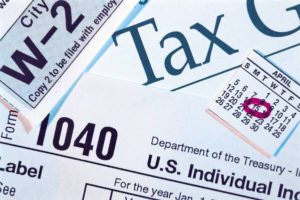If your tax refund this year was disappointing, you may be able to do something about it: Contribute more to a retirement fund.
Tax-deductible contributions to 401(k)s, IRAs and other retirement accounts are among the few remaining ways to reduce taxable income if you don’t itemize deductions. And few of us do these days: Only about 1 in 10 taxpayers
As a result, many of the traditional tips and tricks for reducing tax bills either no longer work or are of limited help. In my latest for the Associated Press, how to use your 401(k) to reduce your taxable income.
 Today’s top story: How to give money advice that sticks. Also in the news: 3 steps to spring clean your credit card debt, how to research 401(k) funds on Morningstar, and using a loan to pay your tax bill.
Today’s top story: How to give money advice that sticks. Also in the news: 3 steps to spring clean your credit card debt, how to research 401(k) funds on Morningstar, and using a loan to pay your tax bill.  Today’s top story: 3 steps to spring clean your credit card debt. Also in the news: Trading privacy for car insurance discounts, how to improve your 401(k), and 4 ways to get a low-interest credit card.
Today’s top story: 3 steps to spring clean your credit card debt. Also in the news: Trading privacy for car insurance discounts, how to improve your 401(k), and 4 ways to get a low-interest credit card. Today’s top story: These 4 tax scams could really cost you. Also in the news: 3 times you can pay taxes with plastic and come out ahead, how to decide between investing in a 401(k) or a Roth 401(k), and the 5 best free money-management apps.
Today’s top story: These 4 tax scams could really cost you. Also in the news: 3 times you can pay taxes with plastic and come out ahead, how to decide between investing in a 401(k) or a Roth 401(k), and the 5 best free money-management apps.  Today’s top story: The average 401(k) balance by age. Also in the news: Taking the next step with your student loans, 3 money tasks to do right now, and what to do with all the tax documents you’re receiving.
Today’s top story: The average 401(k) balance by age. Also in the news: Taking the next step with your student loans, 3 money tasks to do right now, and what to do with all the tax documents you’re receiving.